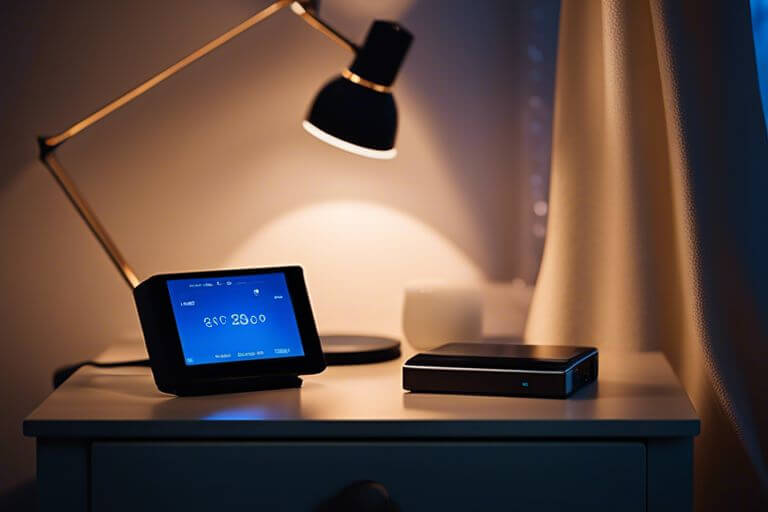Setting Boundaries – The Role of Technology in Sleep Hygiene
Over the past decade, technology has become an integral part of our daily lives, from connecting with loved ones to accessing information at our fingertips. However, the convenience of technology may come at a cost, particularly when it comes to sleep hygiene. The blue light emitted by screens can disrupt our circadian rhythm, making it harder to fall asleep. As we research into the importance of setting boundaries with technology for better sleep quality, let’s explore how we can optimize our bedtime routine for optimal rest and recovery.
Understanding Boundaries
Defining Personal Sleep Boundaries
A crucial aspect of maintaining healthy sleep habits is establishing and adhering to personal sleep boundaries. These boundaries refer to the limits and guidelines individuals set for themselves regarding their sleep routine, including bedtime, wake-up time, and ideal sleep environment.
The Impact of Poor Boundaries on Sleep
Impact of poor boundaries on sleep can be profound, leading to sleep disturbances, increased stress levels, and overall reduced quality of life. When individuals fail to set and maintain boundaries around their sleep, it can result in disrupted circadian rhythms, increased vulnerability to sleep disorders, and difficulty in achieving restful sleep.
It is crucial to recognize the detrimental effects of poor sleep boundaries on overall well-being. By neglecting to establish healthy limits around sleep, individuals expose themselves to potential health risks such as cardiovascular issues, impaired cognitive function, and emotional disturbances. Prioritizing and enforcing personal sleep boundaries is necessary for promoting optimal sleep hygiene and overall wellness.
Technology’s Role in Sleep Disruption
Blue Light and Circadian Rhythm
Little do we realize the impact technology has on our sleep patterns. The blue light emitted by screens, such as those on smartphones, computers, and televisions, can disrupt our circadian rhythm, the internal clock that regulates our sleep-wake cycle. This light suppresses the production of melatonin, the hormone that helps us fall asleep, making it harder to unwind and get a restful night’s sleep.
Notifications and the Need for Constant Connectivity
The constant buzz of notifications from our devices keeps us tethered to our screens, creating a sense of urgency to always be connected. This need for constant connectivity can lead to interrupted sleep as we feel compelled to check messages, emails, and social media updates at all hours. The fear of missing out or being out of the loop can drive a cycle of sleep deprivation and heightened stress levels.
Strategies for Enhancing Sleep Hygiene with Technology
Using Tech Tools for Better Sleep
One of the key ways technology can enhance sleep hygiene is through the use of sleep tracking devices and apps. These tools can provide valuable insights into your sleep patterns, helping you understand the quality of your sleep and identify areas for improvement. By monitoring your sleep duration and quality, you can make informed decisions to promote better sleep habits.
Limiting Technological Disturbances
For effective sleep hygiene, it is crucial to set boundaries on technology use before bedtime. Exposure to screens emitting blue light can disrupt the production of melatonin, the hormone that regulates sleep. It is recommended to avoid screens at least an hour before bed. Additionally, notifications and alerts from electronic devices can be disruptive, leading to difficulty falling asleep. Creating a tech-free bedtime routine can significantly improve the quality of your sleep.
Tech limits should also be set within the bedroom environment. Electronics can be a source of distraction and temptation, leading to prolonged screen time in bed. To create a sleep-conducive environment, consider removing electronic devices from the bedroom or setting specific times for powering them down. Establishing boundaries with technology is crucial for promoting healthy sleep habits.
Implementing a Sleep-Friendly Technology Protocol
Creating a Technology Curfew
With the pervasiveness of technology in our daily lives, it’s crucial to establish a technology curfew to promote better sleep hygiene. Set a specific time each night when electronic devices such as smartphones, tablets, and laptops are turned off to allow the brain to wind down naturally and prepare for rest. This practice can help reduce exposure to blue light, which disrupts the body’s natural sleep-wake cycles.
Designing a Sleep-Conducive Environment
On top of implementing a technology curfew, creating a sleep-conducive environment is crucial for optimal rest. Keep your bedroom cool, dark, and quiet to promote deep and uninterrupted sleep. Invest in a comfortable mattress and pillows, and consider using blackout curtains to block out external light sources.
Another crucial aspect of designing a sleep-conducive environment is reducing clutter and distractions in the bedroom. Clutter and visual distractions can increase stress levels and inhibit relaxation, making it harder to fall asleep. Consider removing electronic devices, work-related materials, and unnecessary items from your sleeping space to create a peaceful and calming atmosphere that is conducive to restful sleep.
Summing up
Setting boundaries with technology is crucial for maintaining good sleep hygiene. By establishing clear limits on screen time before bed, creating a technology-free bedroom environment, and implementing strategies to reduce exposure to blue light, individuals can improve the quality of their sleep. It is vital to recognize the impact that technology has on our sleep patterns and take proactive steps to mitigate its negative effects. Prioritizing good sleep hygiene is vital for overall health and well-being, and setting boundaries with technology is an important aspect of achieving restful and rejuvenating sleep.

